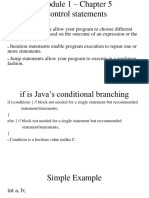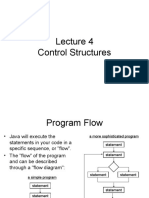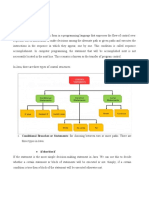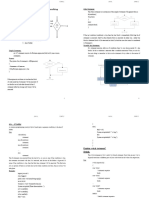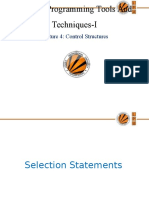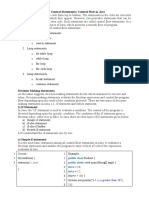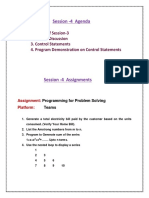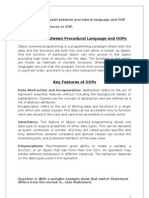0% found this document useful (0 votes)
10 views44 pagesUnit 1 - Control Flow
The document provides an overview of Java control flow, including syntax, types, variables, and operators. It details control flow statements such as selection statements (if, if-else, switch), iteration statements (while, do-while, for), and jump statements (break, continue, return). Examples are provided to illustrate the usage of these control flow constructs in Java programming.
Uploaded by
poudelbhabishyaCopyright
© © All Rights Reserved
We take content rights seriously. If you suspect this is your content, claim it here.
Available Formats
Download as PDF, TXT or read online on Scribd
0% found this document useful (0 votes)
10 views44 pagesUnit 1 - Control Flow
The document provides an overview of Java control flow, including syntax, types, variables, and operators. It details control flow statements such as selection statements (if, if-else, switch), iteration statements (while, do-while, for), and jump statements (break, continue, return). Examples are provided to illustrate the usage of these control flow constructs in Java programming.
Uploaded by
poudelbhabishyaCopyright
© © All Rights Reserved
We take content rights seriously. If you suspect this is your content, claim it here.
Available Formats
Download as PDF, TXT or read online on Scribd
/ 44







